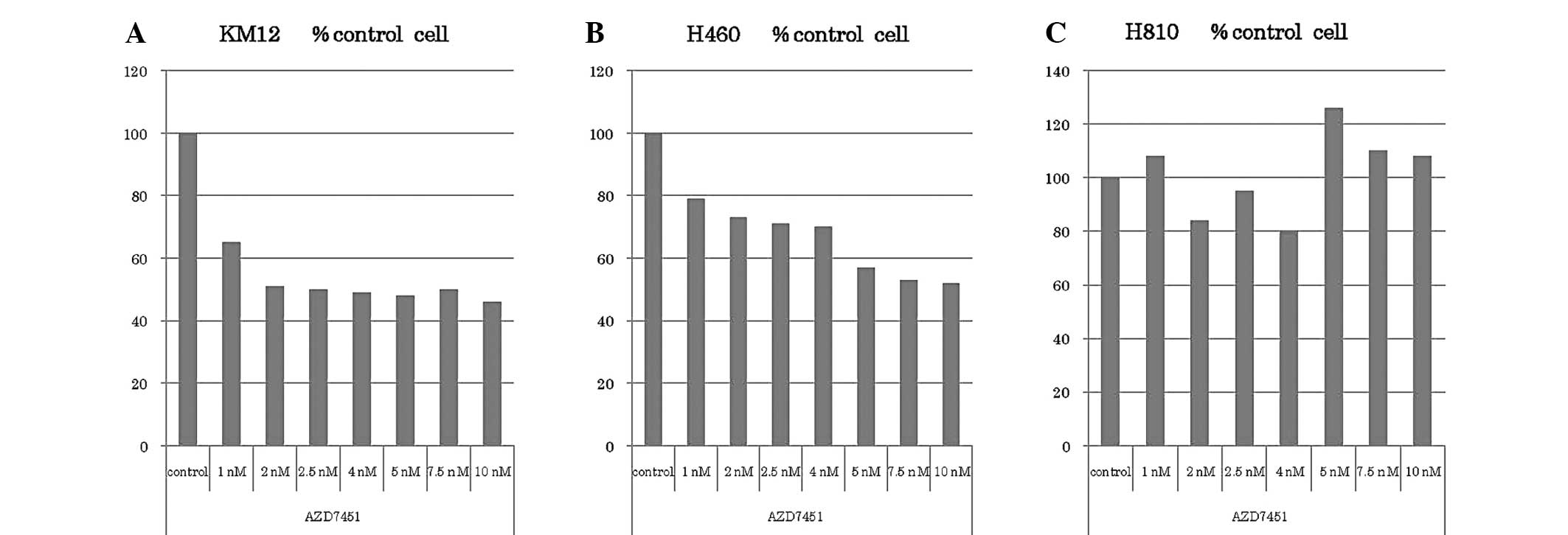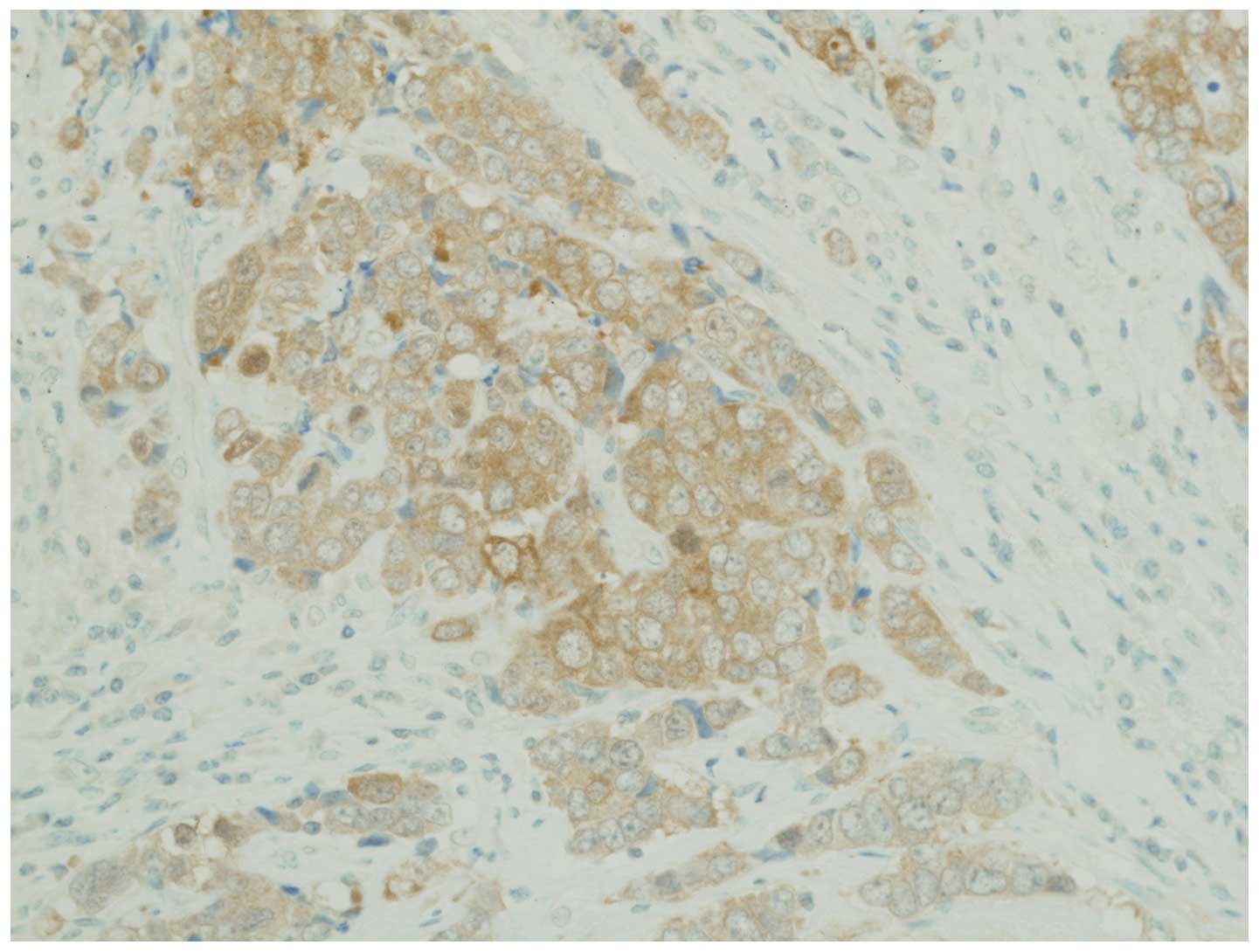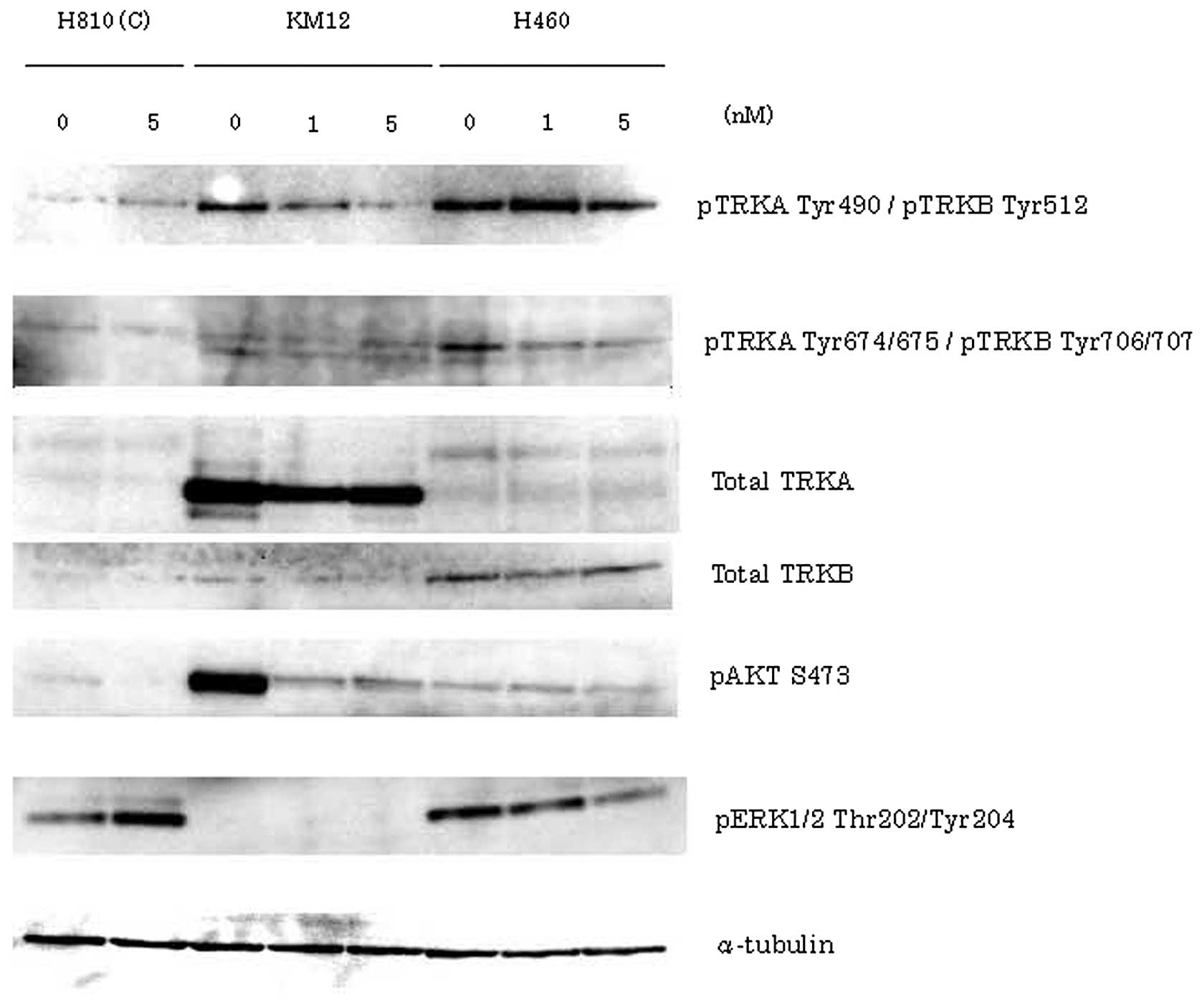Investigation of neurotrophic tyrosine kinase receptor 1 fusions and neurotrophic tyrosine kinase receptor family expression in non‑small‑cell lung cancer and sensitivity to AZD7451 in vitro
- Authors:
- Published online on: June 19, 2014 https://doi.org/10.3892/mco.2014.318
- Pages: 725-730
Metrics: Total
Views: 0 (Spandidos Publications: | PMC Statistics: )
Total PDF Downloads: 0 (Spandidos Publications: | PMC Statistics: )
Abstract
Advances in the molecular segmentation of lung cancer has raised the possibility that neurotrophic tyrosine kinase receptor (NTRK) 1 fusions and NTRK1‑3 expression may be promising molecular targets for future therapeutic interventions. We investigated the antitumor effects of a selective pan‑NTRK inhibitor, AZD7451, by evaluating its antiproliferative effects on the KM12 cell line (a colorectal cancer cell line harboring a tropomyosin‑NTRK1 fusion) and the H460 and H810 cell lines [large‑cell neuroendocrine carcinoma (LCNEC) cell lines expressing NTRK2]. Relative quantitative polymerase chain reaction (qPCR) was performed to measure the mRNA levels of the NTRK1‑3 tyrosine kinase domain using cDNA extracted from KM12, H460 and H810 cells. The cultures were grown in 6‑well plates at a density of 1.0x106 cell/well and treated with AZD7451 at different doses (1, 2.5, 4, 5, 7.5 and 10 nM) using dimethyl sulfoxide as a control. Following a 24‑h incubation, the number of surviving cells was measured using a hemocytometer. Furthermore, we performed western blotting of the high‑affinity nerve growth factor receptor (TRKA) and NTRK2 (TRKB) proteins and monitored the effects on the downstream signaling pathways Akt and ERK in these cell lines following treatment with AZD7451 (KM12 and H460: 0, 1 and 5 nM; H810: 0 and 5 nM). Immunohistochemical analyses of the surgically resected samples were also performed, using anti‑NTRK1,2 antibodies. We performed reverse‑transcription PCR and direct sequencing to investigate NTRK fusions in 268 patients; however, were unable to confirm the presence of NTRK fusions in this cohort. Further immunohistochemical analyses of the primary patient samples demonstrated that none of 61 tumors had NTRK1 overexpression and 7 of 39 samples exhibited NTRK2 expression, including 1 LCNEC sample. The qPCR results from the KM12 cell line revealed an apparent increase and overexpression of NTRK1 mRNA levels, while H460 cells exhibited a modest increase and the H810 cell line showed no apparent increase in the expression of any NTRK1‑3 isoforms. There were no increases in the NTRK2 mRNA levels in any of the three cell lines, although KM12 and H460 cells exhibited low levels of NTRK2 expression. In vitro growth and proliferation of the KM12 cell line harboring the NTRK1‑fusion was found to be potently inhibited by AZD7451 at a concentration of 2 nM. The proliferation of H460 cells was also found to be inhibited at a concentration of 5 nM, while there was no apparent inhibitory effect of AZD7451 on the growth or proliferation of H810 cells. Western blotting of KM12 cells treated with AZD7451 also revealed a potent inhibition of TRKA phosphorylation following AZD7451 treatment. Analysis of H460 cells confirmed the expression and inhibition of phosphorylation of NTRK2, whereas there was little to no expression of TRKA/B in H810 cells. subsequent in vitro analysis of cell lines treated with the pan‑TRK inhibitor AZD7451 suggested that the proliferation of KM12 and H460 cells was significantly inhibited by AZD7451, while H810 cells expressing low levels of wild‑type NTRK1‑3 were not inhibited. Based on these results, there is potential for a NTRK‑dependent proliferation driver in a subpopulation of lung cancer patients with NTRK expression. in addition, pharmacological inhibition with a NTRK inhibitor, such as AZD7451, in cells harboring NTRK1 fusions, may be associated with beneficial antitumor effects.













